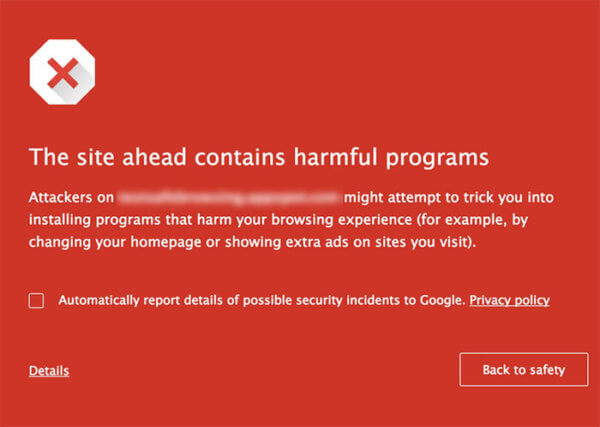The recent Penguin update – now part of Google’s core algorithm – has begun identifying malicious links in real time, and assessing penalties in real time, too. The need for vigilance over your site’s links has never been greater.
Is That Inbound Link Helpful or Harmful?
For more than a decade now, SEO experts have extolled the value of inbound links, and they’re still a major ranking factor for top search engines. However, just as the positive impact to your SEO ranking is directly proportional to the quality of the site linking to yours, links from harmful, malicious and/or spammy sites can have a strong negative impact.
With the integration of Penguin 4.0, Google has improved its ability to discern whether a link or two from a negative site is a random event that could – and does! – happen to most websites, or whether there’s enough of a pattern to warrant a penalty.
Because the algorithm runs in real time, harmful practices that had previously gone unnoticed for long periods of time can now be penalized very quickly. Unfortunately, operators of harmful websites could react and create workarounds quickly, too. In another effort to avoid that possibility, Google has strengthened the consequences for consistently negative sites – and that could affect your site as well.
No More Revolving Door for Repeat Offenders
In recent weeks, Google has instituted a classification of “Repeat Offender” for websites that violate the company’s Malware, Unwanted Software, Phishing and Social Engineering Policies … repeatedly.
 If a site is found in violation of those policies, a warning like this will show when a user attempts to access the site. The site’s webmaster must clean up the offending practice(s) ASAP, then ask Google to review the site and remove the warning once the cleanup has been verified.
If a site is found in violation of those policies, a warning like this will show when a user attempts to access the site. The site’s webmaster must clean up the offending practice(s) ASAP, then ask Google to review the site and remove the warning once the cleanup has been verified.
This system allows site owners to correct problems on their site, and gives them the benefit of the doubt that such problems are most likely mistakes made by otherwise ethical operators.
Unfortunately, not all webmasters are ethical operators.
As Brooke Heinichen from Google’s Safe Browsing Team posted, “We’ve observed that a small number of websites will cease harming users for long enough to have the warnings removed, and will then revert to harmful activity.” Enter the Repeat Offenders designation.
Now, sites that have gone through the notification-cleanup-removal-reverting process many times in the past will be classified as Repeat Offenders, and that red warning label will be displayed for 30 days following every new notification, no matter how many times the webmaster asks Google to review it.
If you’re feeling nervous that your site could be a Repeat Offender and you might not know it, we’d like to reassure you – and so would Google. Heinichen also posted, “Please note that websites that are hacked will not be classified as Repeat Offenders; only sites that purposefully post harmful content will be subject to the policy.” And, of course, you’re not purposefully posting harmful content!
No, where the danger to your site might come is if several of these Repeat Offender sites link to yours. The post-Penguin algorithm seems to be relatively forgiving of one or two links from harmful sites, but its tendency is to look for patterns, and 3 or more such links can start to look like a pattern – and a penalty.
But What About Your Outbound Links?
The links from your site to other sites could be harmful to your site as well. Not because you’re a malicious site, but because you might be using outdated practices when linking.
 With the new update, Google has stepped up its warnings for “unnatural outbound links.” What makes an outbound link unnatural? Again, the algorithm seeks out patterns, and when it finds what looks like a pattern of links that use identical anchor text, or are irrelevant to the content on the page, or are just too concentrated on one page or section of your site, it issues a warning.
With the new update, Google has stepped up its warnings for “unnatural outbound links.” What makes an outbound link unnatural? Again, the algorithm seeks out patterns, and when it finds what looks like a pattern of links that use identical anchor text, or are irrelevant to the content on the page, or are just too concentrated on one page or section of your site, it issues a warning.
Unfortunately, as recently as 2012 (and even, we are told, to this day), some SEO consultants were advising clients to do this sort of thing: link to lots of other sites, even if the site or its content didn’t have much connection to your site or content, use the same anchor text as much as possible to rank higher for the keywords in that text, turn it all up to 11 and break off the knob.
If any of those tactics are ringing a bell, it might be time to review your links, and to establish protocols for outbound links that protect your site and don’t make it seem like you’re stuck in 2012.
Also, keep an eye on comments to your blog or other web pages. If too many excessively spammy comments are allowed on your site, you might be at risk for an outbound link penalty.
Google shouldn’t be the only entity that’s extra-vigilant these days; the team in charge of your SEO needs to be on their toes as well, staying on top of all the newest developments in algorithms, policies and penalties. Of course, that’s what we do every day at (un)Common Logic. If you’d like that kind of team working on your SEO, let’s talk.

